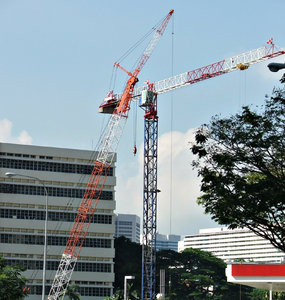Officials with the Occupational Safety and Health Administration (OSHA) have recently signed an alliance with the National Association of Women in Construction to develop training materials to help protect the women who work in the construction industry. The alliance is going to be focusing on sanitation and musculoskeletal risks as well as issues related to poorly-fitted personal protective equipment (PPE).

“We will work together to forge innovative solutions to improve the safety, health and working conditions for women in the construction trades and retain female workers during a critical time of job shortages in this industry,” said Dr. David Michaels with the Occupational Safety and Health Administration.
Our Boston workers’ compensation lawyers understand that different workers may require special attention and assistance to complete a job safely. The aim of this new alliance is to provide fact sheets, training programs and special outreach resources for problems women may face on construction sites across the nation. The alliance also unveiled the new Women in Construction web page. This is a site that not only outlines, but also addressed certain health and safety issues that are specific to female workers.
The number of women who are employed in the U.S. is growing. As a matter of fact, employment grew more than 81 percent from 1985 to 2007. On the other hand, we’ve seen a significant decrease because of the overall loss of construction jobs from 2007 to 2010. While less than 10 percent of construction workers in the U.S. are women, there were still close to 100,000 female workers in the industry in 2010. And of those workers, about 20,000 of them were employed in production occupations, such as laborers, electricians, plumbers, etc. In turn, the small numbers of women workers on construction work sites foster an environment in which safety and health problems continue to arise.
Nearly half of the estimated 100 million working people over the age of 16 in this country are women. By educating these workers about the occupational safety and health challenges facing women workers, we can help make the workplace safer for all employees.
With PPE, it is true that manufacturers offer small sizes in gloves, respirators, safety shoes and safety glasses, but it’s not very common to find these smaller sizes in many manufacturing environments. It’s that “one-size-fits-all” theory that’s putting these workers at risk. With over-sized goggles, they may not seal properly or that may slide to the side and impair a worker’s vision. Respirators that are to big aren’t going to be able to keep the worker from inhaling contaminants. When gloves don’t fit properly, they can get stuck in or caught in equipment or cause materials or tools to be dropped more easily. The “one-size-fits-all” theory isn’t only dangerous to many female workers, but it is also against OSHA regulations as well.
It’s important for female workers to speak up if they feel that they don’t have the proper safety equipment on the job or if they aren’t getting the same treatment as everyone else. Employers of all kinds are to be provided with a safe working environment and to be properly protected on each and every work site.
If you or a loved one has been injured on the job in Massachusetts, call Jeffrey Glassman Injury Lawyers for a free and confidential consultation to discuss your workers’ compensation claim– (617) 777-7777.
More Blog Entries:
Workers’ Parents Win $1M in Wrongful Death Suit, Massachusetts Worker’s Compensation Lawyers Blog, August 30, 2013
Training to Get A Job — And To Protect Yourself, Massachusetts Worker’s Compensation Lawyers Blog, August 21, 2013
 Massachusetts Workers Compensation Lawyers Blog
Massachusetts Workers Compensation Lawyers Blog

